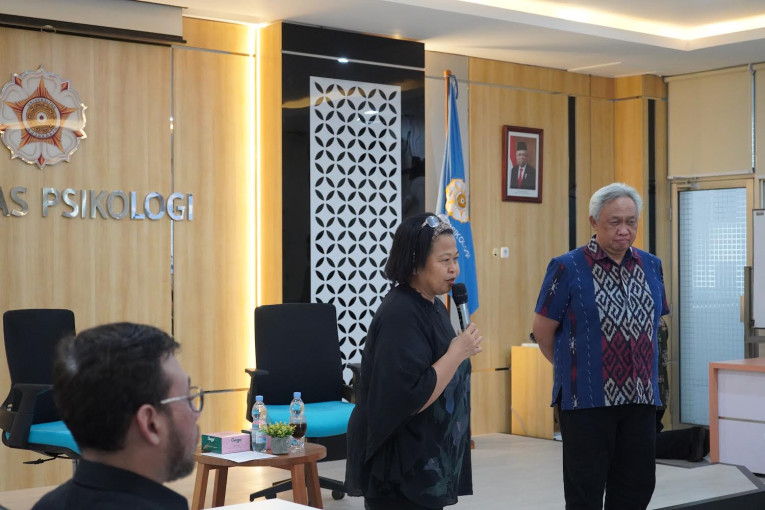
The term “hypnosis” still carries a negative stigma in Indonesia. However, clinical hypnotherapy can be used as a supportive treatment method for various complaints and specific disorders, including mental disorders.
The UGM Faculty of Psychology (Psychology UGM), through the Hypnotic Guided Imagery and Transpersonal Research Studio (HGI Studio), organized a workshop titled “Clinical Hypnosis and Neuroscience: Reading EEG and Its Applications in Psychology” on Friday (Jun. 21).
The event, held in a hybrid format, was attended by 72 participants from various backgrounds and professions, including researchers, doctors, and psychologists from different institutions such as health centers, hospitals, clinics, pharmacies, universities, companies, and professional organizations.
This workshop was the first part of a three-series event to provide a deep understanding of the integration between clinical hypnotherapy and neuroscience and its application in modern psychological practice.
Neuroscience is a field of study that explores the nervous system or neural systems with a multidisciplinary approach, including psychology. Developing neuroscience in clinical hypnotherapy research is crucial to explain the neurological and physiological responses that result from interventions.
Professor Kwartarini Wahyu Yuniarti, a psychologist, principal Investigator of HGI Studio, and workshop moderator, opened the event by providing an overview of her clinical hypnotherapy research since 2019.
The research, funded by the Productive Innovative Research Fund of the Indonesian Ministry of Finance (RISPRO–LPDP), aims to develop human emotion measurements using psychophysiological equipment such as EEG, HRV, GSR, and body temperature.
“This research is a collaboration between nine universities in Indonesia, including Universitas Sumatera Utara, Universitas Gunadarma, Universitas Padjadjaran, Universitas Maranatha, Universitas Diponegoro, Universitas Kristen Widya Mandala, Universitas Udayana, and Universitas Pendidikan Ganesha. Data collection was carried outsimultaneously, so the data we obtained is a sample from these nine regions,” Professor Yuniarti explained at the opening.
She found that using hypnosis in therapy resulted in rapid changes in cases such as smoking cessation and specific phobias through memory reconstruction.
“The positive changes in the research subjects convinced me that clinical hypnotherapy could be maximized. Therefore, in this workshop, we invited Professor Ismail to explain the memory reconstruction process from a physiological perspective,” she explained.
In a separate interview, Edwin Gandawijaya, an HGI studio research team member, explained that hypnosis procedures encourage subjects to experience relaxation involving neural correlations in the brain.
“We involve neuroscience because it helps us understand the process of brain plasticity, which impacts brain capability changes and its relationship with the autonomic nervous system. This system controls unconscious body functions such as blood pressure and digestion,” said Gandawijaya.
Professor Ismail Setyopranoto, a professor of Neurology at the UGM Faculty of Medicine, Public Health, and Nursing (FK-KMK UGM), explained that when the body receives signals such as pain, it can amplify or ignore them. This process involves chemicals such as TNF alpha and TNF beta, where TNF beta acts as a protector.
“Our organs, apart from the brain, only receive orders, and pain can be minimized with proper regulation. Similarly, if stress is managed well, mental health will be maintained,” said Professor Setyopranoto.
He also elaborated on the concept of balance in the body, known as milieu intérieur. He emphasized the importance of not viewing bacteria as enemies that must be eliminated immediately, as our bodies need antibodies to fight infections.
Furthermore, he explained the processes of excitation and inhibition used to balance nervous system activity and human physiological processes.
“In motor learning, falling should not be seen as a barrier for a child to stop learning to walk. Instead, it is part of the process where the child adjusts their balance and improves motor skills over time,” he explained.
This experience allows a child’s brain to repair neural pathways and strengthen synaptic connections necessary for better movement coordination.
Reportage: Edwin Gandawijaya
Author: Triya Andriyani

